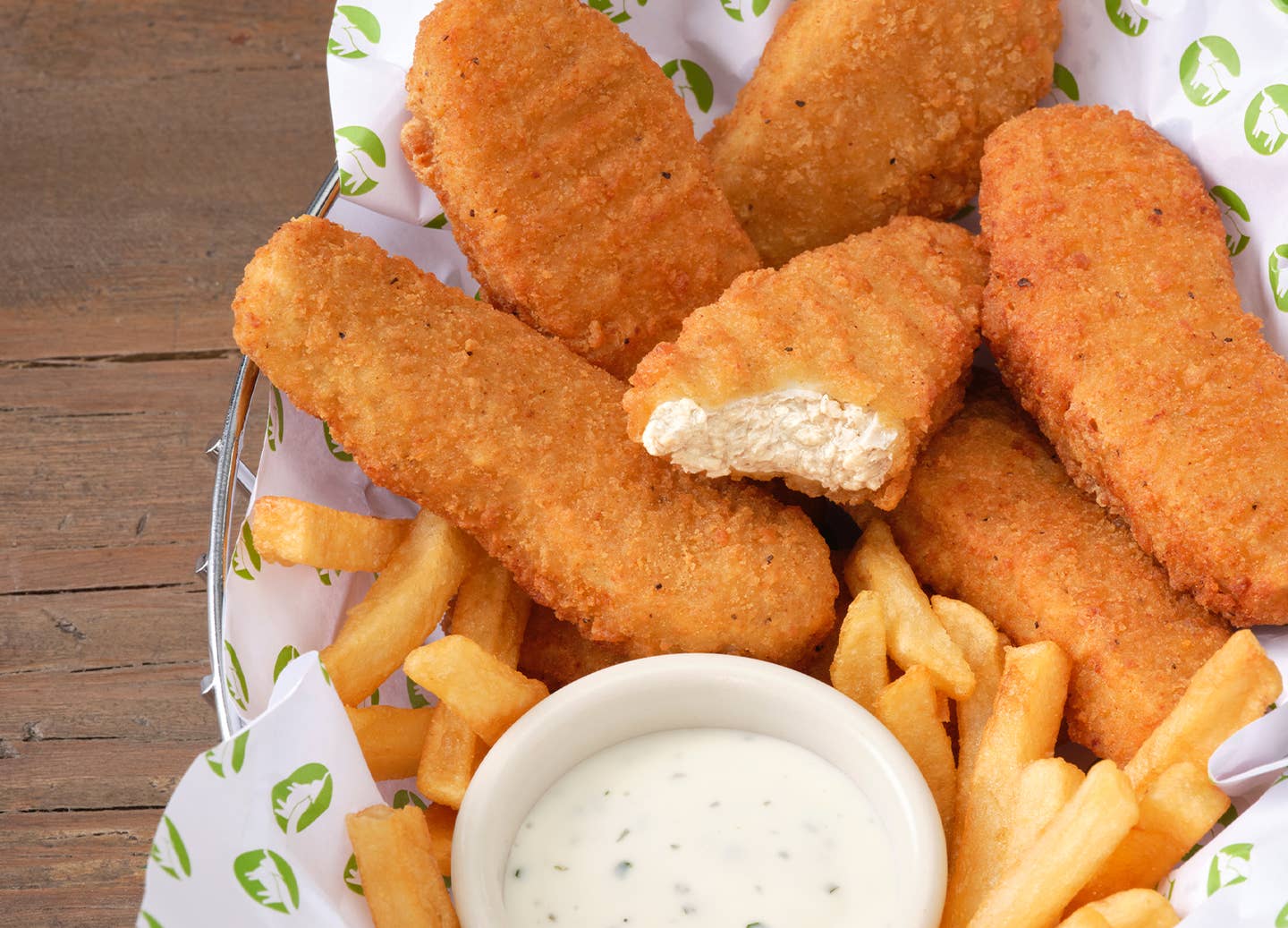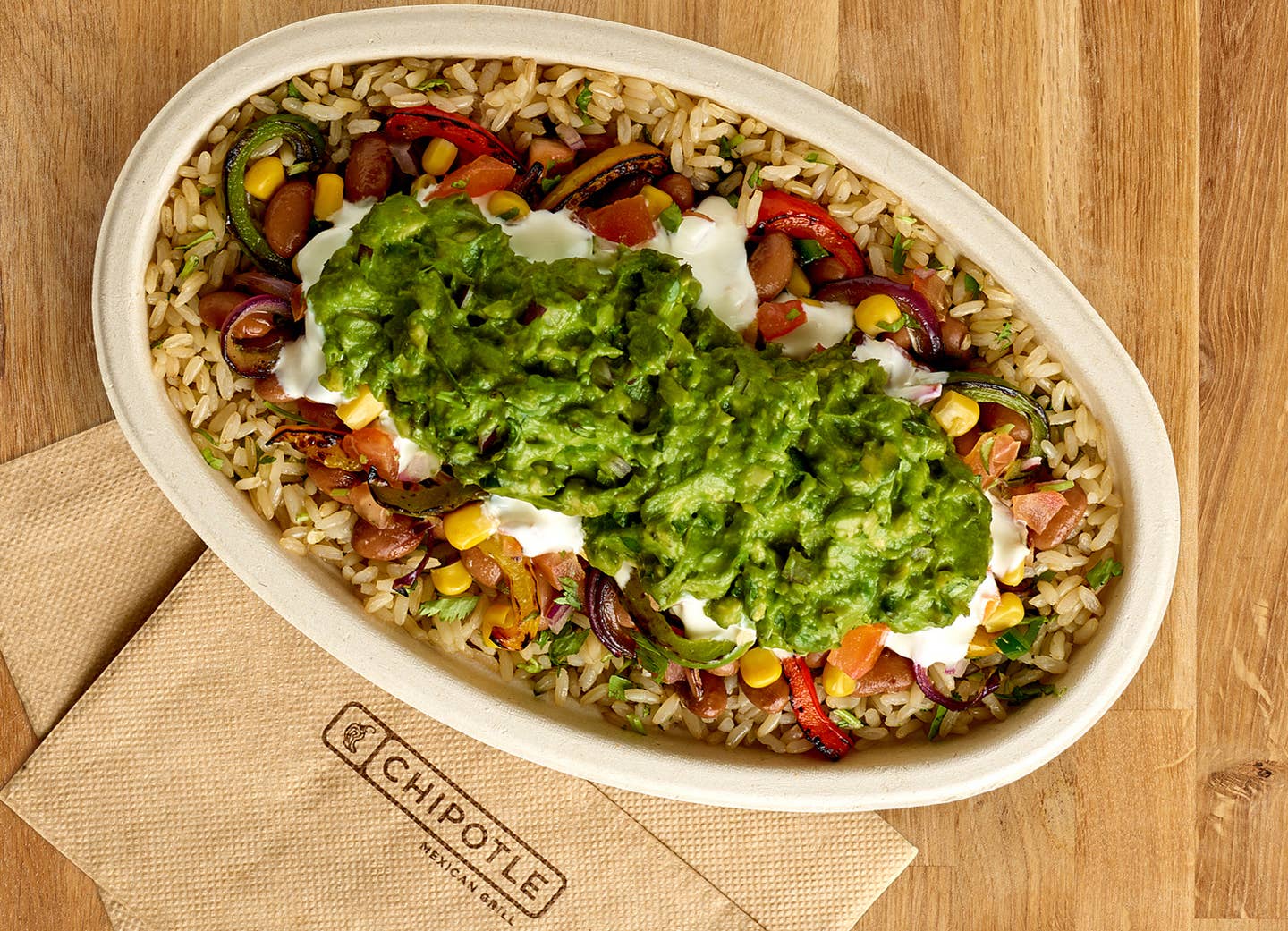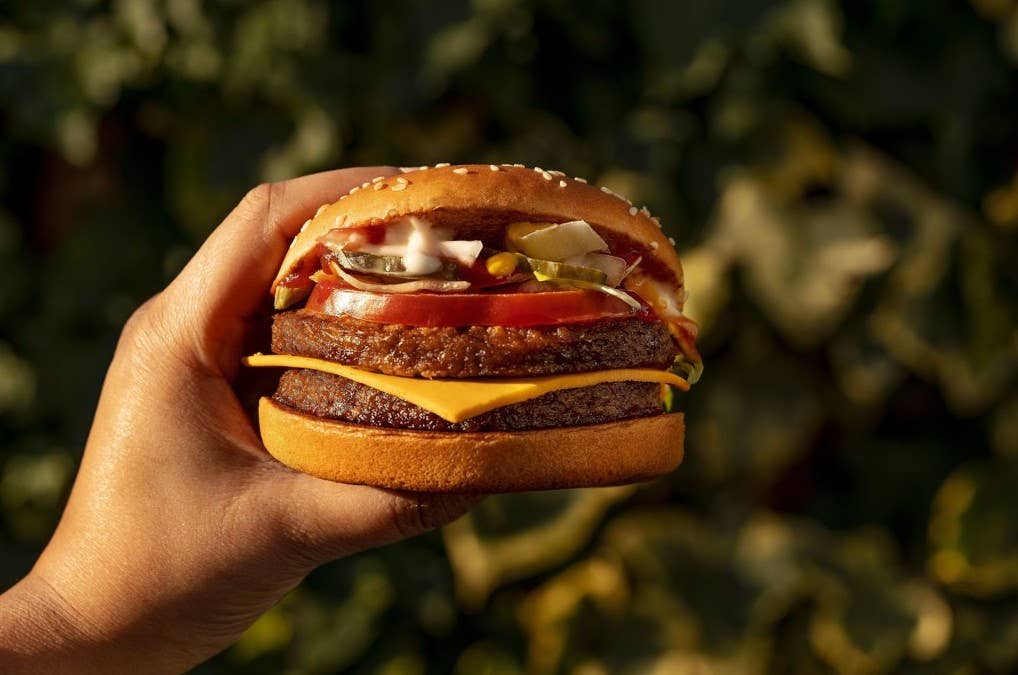
Beyond Meat Chicken Tenders Launch at 400 Restaurants Nationwide
Beyond Meat is rolling out the long-awaited chicken tenders to nearly 400 restaurants nationwide. The plant-based food tech company has been teasing the development of its meatless chicken products, and now consumers nationwide will be able to purchase an order of completely vegan chicken tenders. Previously, the California-based company has hosted trial runs for its Beyond Chicken Tenders, but finally, the company believes that the plant-based protein matches up to the taste and texture of traditional chicken tenders.
“We’re innovating the poultry market with the new Beyond Chicken Tenders - the result of our tireless pursuit for excellence and growth at Beyond Meat,” Dariush Ajami, Chief Innovation Officer at Beyond Meat, said. “As with all our products, Beyond Chicken Tenders offer delicious taste and an exceptional culinary experience, along with strong nutritional benefits. Innovation is at the heart of Beyond Meat, and Beyond Chicken Tenders are the latest example of our mission to create groundbreaking, tasty options that are better for people and for our planet.”
Beyond Meat continues to push its recipes to contain the highest nutritional value for its consumers: The new Beyond Chicken Tenders use simple plant-based ingredients that maximize protein content such as peas and fava beans. Each serving contains 14 grams of protein and boasts 40 percent less saturated fat than conventional animal-based chicken tenders.
Even though Beyond Meat debuted its Beyond Chicken in 2019 at a KFC in Atlanta, the limited launch left people nationwide searching for plant-based fried chicken. Now, the company’s Beyond Chicken Tenders have been developed for restaurants nationwide to redesign their menus to include a vegan chicken substitute. The new plant-based tenders were developed over the last decade with more than 200 team members to deliver tasty substitutes in all menu items from sandwiches to salads.
The plant-based chicken tenders arrive at a time when chicken demand is growing faster than the supply chain can handle. Currently, the United States is facing a widespread chicken shortage, making it an opportune time for Beyond Meat to enter the market. The innovative, nutritious option will allow consumers the ability to eat their favorite chicken meals without relying on the animal chicken market while also prioritizing a far more sustainable food option.
Beyond Meat also hopes that this nationwide rollout will help restaurants facing financial hardship following the COVID-19 pandemic. Restaurants all over the country have been struggling to return to normal following the COVID-19 shut down, so the company hopes that by including plant-based meat to meet the declining supply of plant-based chicken then both restaurants and Beyond Meat will profit.
“Beyond Chicken Tenders are a craveable, crispy, and delicious plant-based product that meat-lovers and veggie-lovers alike will dunk, crunch, and love,” the National Restaurant Association released in a statement awarding the Beyond Chicken Tenders the 2021 Food and Beverage Award. “In consumer testing, Beyond Chicken Tenders scored on par in likeability with the leading animal-based chicken tender, making them a must-have menu item that will elevator your menu to compete in the Chicken Wars.”
Earlier this year, Beyond Meat released its Beyond Burger 3.0 that increased its signature product’s nutritional value. The newest Beyond Burger contains 35 percent less total fat and 35 percent less saturated fat than its previous version. As the company continues to reinvent the plant-based market, it also highlights the importance of nutrition in a plant-based diet.
Consumers can now find Beyond Chicken Tenders at almost 400 restaurants nationwide including Epic Burger, Blissful Burgers, Bad Mutha Clucka, Verdine, Plant-Based Pizzeria, Melt Bar and Grilled, and many more. Currently, Beyond Meat is the top plant-based meat brand at grocery stores with its products available at 39,000 retailers and food service locations nationwide.
Top 10 Sources of Plant-Based Protein According to a Nutritionist
1. Seitan
Protein: 21 grams in ⅓ cup (1 ounce) Seitan isn’t as popular as other proteins, but it should be! Made from wheat gluten, its texture resembles ground meat. It’s often used in pre-made veggie burgers or meatless nuggets. Seitan has a savory taste, like mushrooms or chicken, so it works well in dishes that call for an umami flavor. With a hearty texture, seitan can be the star of practically any vegan main dish. Add it to stir-fries, sandwiches, burritos, burgers, or stews. Like tofu, seitan will take on the flavor of any marinade or sauce.
2. Tempeh
Protein: 16 grams in 3 ounces If you like a protein with a bit of bite, add tempeh to your list. Made from fermented soybeans, tempeh has a slightly nutty flavor and is pressed into a block. Most varieties include some sort of grains, such as barley or millet. Not only is tempeh a plant-based source of protein, but the fermentation process also creates good-for-your-gut probiotics. You can cut tempeh right off the block and use it as the base for a sandwich or pan-fry it with some sauce. Or, crumble, heat, and make it the star of your next taco night.
3. Lentils
Protein: 13 grams in ½ cup cooked Lentils come in multiple varieties--red, yellow, green, brown, black. Regardless of the type lentils are small but mighty nutritional powerhouses. They pack a good amount of protein as well as iron, folate, and fiber. When cooked, brown lentils retain their texture and can be the base for a grain bowl or make a hearty substitute for ground meat in meatballs, lasagna, tacos or Bolognese. Red lentils are a bit softer and make a nice add-in for a hearty soup, chili, or stew.
4. Hemp Seeds
Protein: 10 grams in 3 tablespoons Hemp seeds are a tender and nutty seed, derived from the hemp plant. They contain good amounts of omega-3s, iron, folate, magnesium, phosphorus, and manganese. They are also a solid source of both soluble and insoluble fiber, which helps to keep your digestive tract healthy and humming. Because they pack a double whammy of protein and healthy fats, hemp seeds can help satisfy hunger, preventing those embarrassing stomach growls as you slog your way to your lunch break. Add them to your morning smoothie or sprinkle them on top of yogurt, oatmeal, or even a salad.
5. Tofu
Protein: 9 grams in 3 ounces (⅕ of a block) Made from coagulated soybeans, tofu is the most popular plant-based protein. Soy is one of the only meatless "complete" proteins, meaning that it contains all of the essential amino acids that the body can’t make but needs for muscle and immune function. With 15% of your daily calcium needs, tofu is also a good replacement for dairy.
6. Edamame
Protein: 9 grams of protein in ½ cup This sushi appetizer is a nutrient powerhouse, so eat it anytime. Edamame is really just another name for soybeans in their pods. Let’s list off some stats--a small ½-cup serving of edamame has 9 grams of protein, 15% of your daily vitamin C, 10% of your daily iron and 16% of your daily fiber. Keep a bag of edamame in your freezer to serve as a fun-to-eat side dish or opt for the shelled variety to toss into salads or a grain bowl.
7. Quinoa
Protein: 8 grams per cup (cooked) Quinoa is an ancient grain and since it's gluten-free a great choice for anyone avoiding gluten. Add it to your burger recipe to create filling texture, or instead of meat in your taco or burrito. Quinoa is among the healthiest foods on the planet, delivering phytonutrients that have anti-inflammatory qualities, so keep it in your pantry for any meal that needs a filling grain. Just remember to soak it and rinse before cooking to get rid of any bitter taste.
8. Black Beans
Protein: 7 grams in ½ cup (canned) Eating beans on the regular might as well be a prerequisite for a plant-based diet. Not only are canned black beans inexpensive, but they also contribute 10% of your daily iron and 25% of your daily fiber to your diet. For less than $1 a can, beans can be the star of tacos, quesadillas, salads, soups, burgers, or dips.
9. Amaranth
Protein: 6 grams in ⅔ cup (cooked) Chances are you’ve never cooked amaranth. But you should, since this tiny, gluten- free grain is packed with almost 30% of your daily fiber and 20% of your daily iron. Cook it like a traditional grain to yield a soft, porridge-like texture. Many people add amaranth to other a hot breakfast cereal mixture, like oats and quinoa. It also pops like popcorn. Toss it in a pot with some oil and wait for it to pop up into a nutritious snack.
10. Peas
Protein: 5 grams in ⅔ cup If peas were one of your most hated veggies as a kid, it’s time to give them another chance. These green beans are a great low-calorie protein to keep in your freezer. Sure, they don’t always taste great when steamed or microwaved (who wants to eat mushy, overcooked peas?), but they do blend well into a yummy puree that can be slathered on toast. To amp up the flavor, add some lemon juice or mint to your mix before you blend.
More From The Beet






